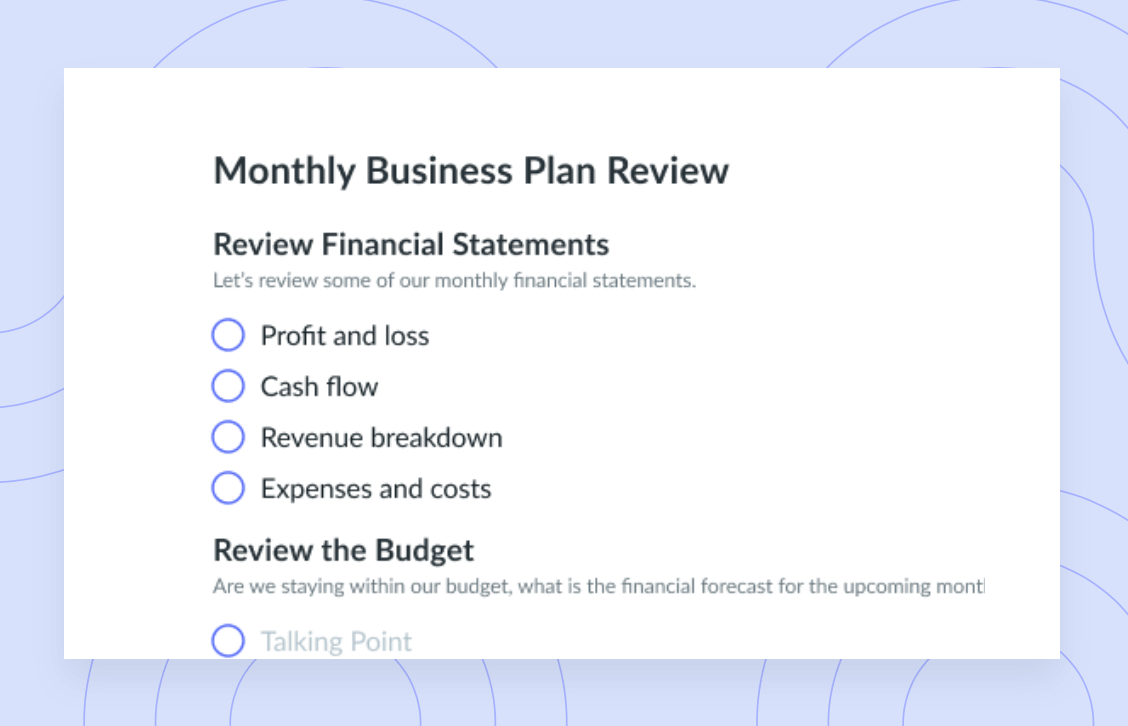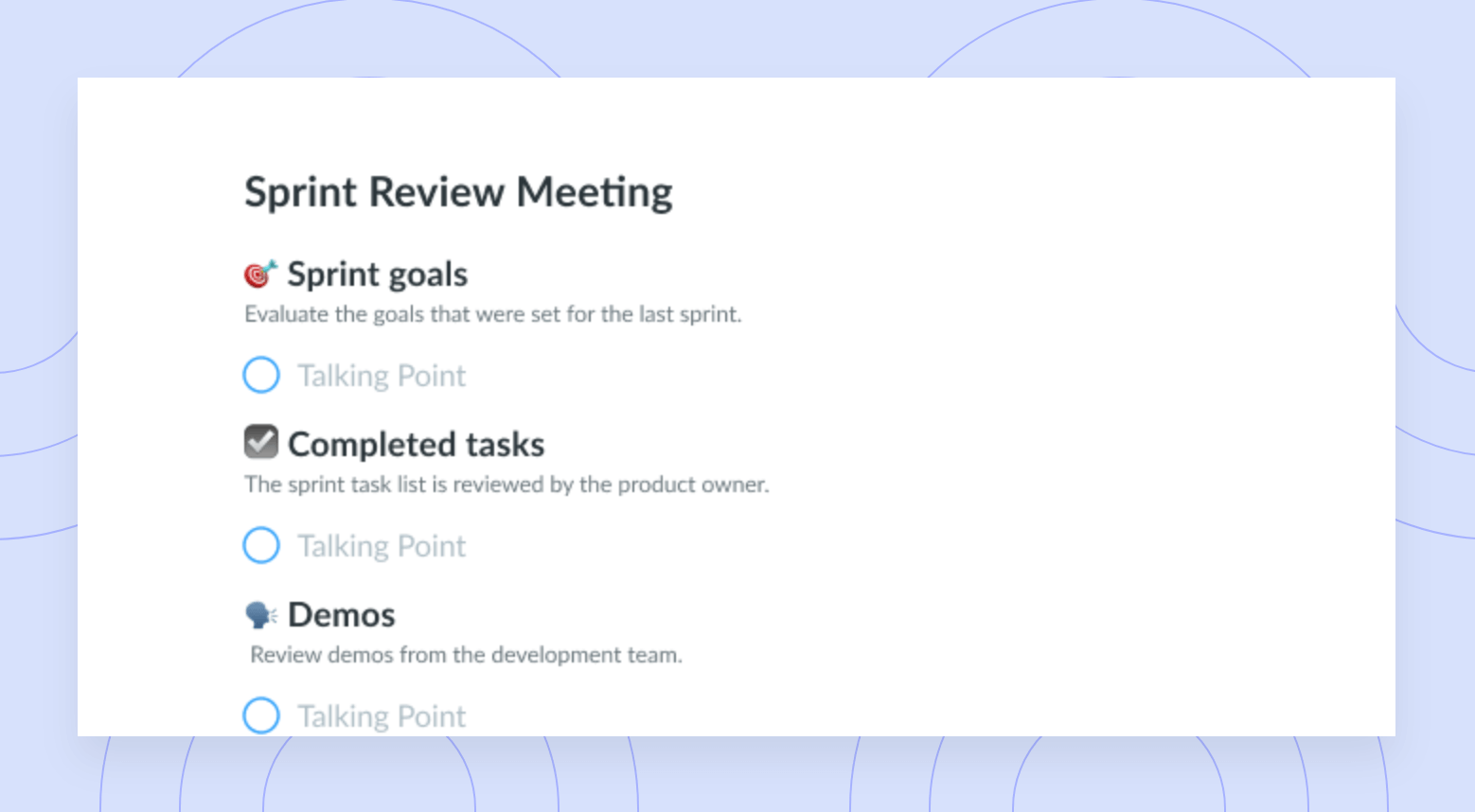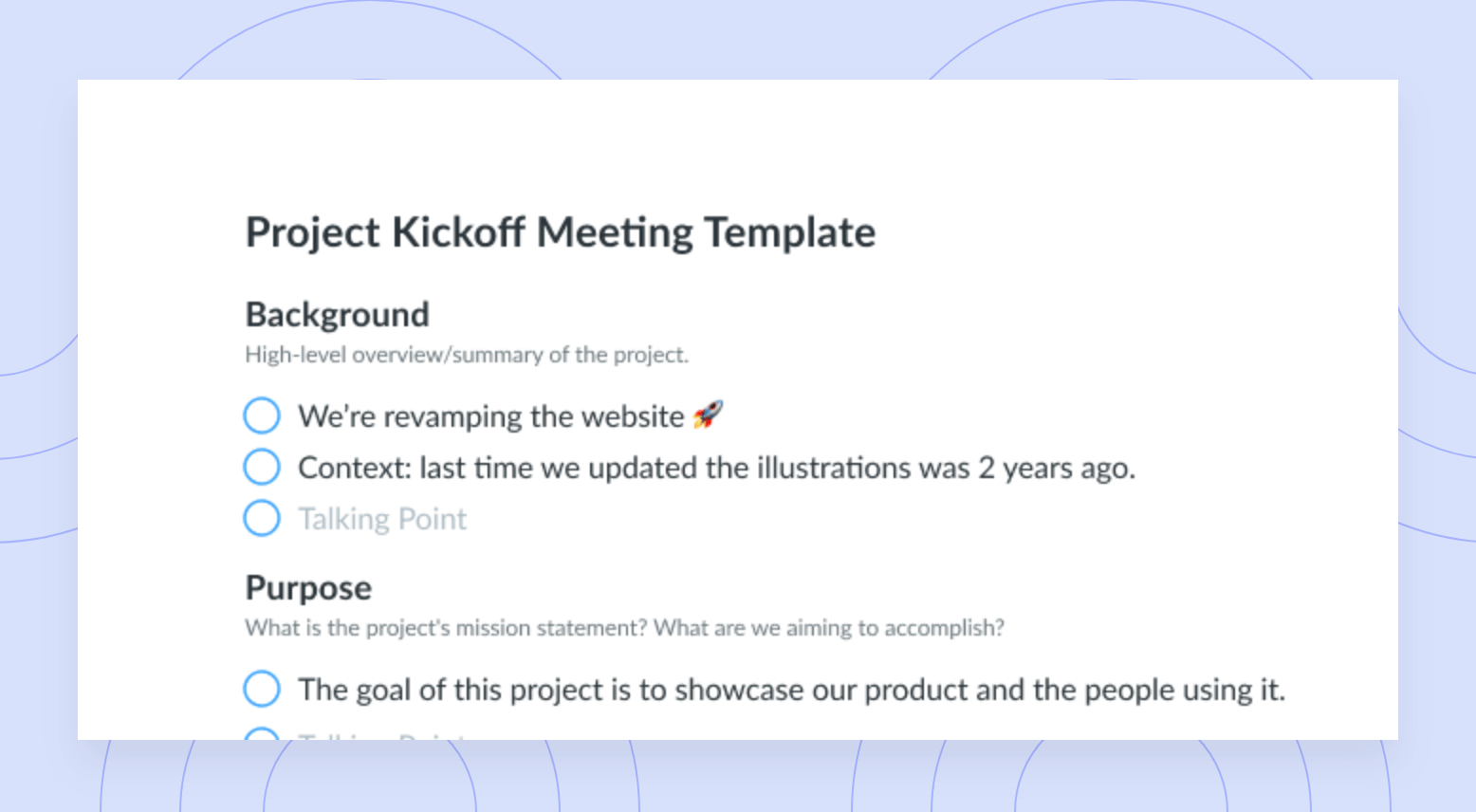
Project Requirements Checkpoint Template
Get this templateUse this project checkpoint to ensure that the business requirements for the project have been identified and completed.




Project requirements checkpoint meeting overview
What is a project requirements checkpoint meeting?
A project checkpoint (also known as a decision point) is a benchmark during any project that is predetermined by the team completing the project in an attempt to get the team to stop, analyze the current status of the project, and make key decisions regarding the future of the project. This checkpoint is when the team will determine whether or not they’re happy with the current status of the project. At this point, team members will determine if they are satisfied or if they need to continue to make iterations. In extenuating circumstances, the team may decide to abandon the project altogether.
A project requirements checkpoint meeting is a meeting that occurs between teammates in an attempt to foster alignment and draw conclusions relating to the project in question. During this meeting, teammates work together to ensure business requirements for the project have been identified and completed. In addition, this time can be used to evaluate what did and didn’t go well, so you can make an informed decision when it comes to deciding how to proceed with the project.
Project requirements checkpoint meetings are incredibly important as they shape the future of the project in question. Failing to check in and perform your due diligence when you hit certain checkpoints or benchmarks can be detrimental to your team’s long-term success.
How long and frequent should project requirements checkpoint meetings be?
When determining the length and frequency of these meetings, it’s important to take an individualized approach. You’ll want to make sure that you host project requirements checkpoint meetings in accordance with any major checkpoints or project benchmarks. In terms of determining the length of the meeting, leveraging a meeting agenda that encompasses your template will help you determine how long you need for each talking point. Making sure that you have ample time to discuss all key points without taking too much time out of your teammate’s calendars is imperative.
What’s inside this Project Requirements Checkpoint Template:
The first step to hosting an effective meeting is choosing a template. With Fellow, you can choose from one of many prebuilt templates that come with recommended talking points so you can get started immediately. After you’ve selected your template, you can get to work on customizing it to suit the unique needs of your team. When you’re ready to host your next meeting, you can bring your template to life in real time by encouraging your teammates to add talking points and contribute as they see fit.
Our templates make it easier than ever to host effective project requirements checkpoint meetings that will set the pace for future tasks. Complete with four key sections including requirements, issues, needs, and next phase, this template encompasses everything you need to keep your team on track and working towards your shared goals.
1Requirements
What “requirements” tasks have been completed?
This section is where you’ll discuss what required tasks have been completed. During this time, you can encourage a round table discussion and have each one of your teammates provide a brief update on their contributions to date. It’s important that all teammates have the opportunity to provide an update.
2 Issues
Are there any open issues?
This is when you and your teammates will discuss any issues or hurdles. During this time, it’s important that you encourage your teammates to speak up and discuss anything that may be preventing them from moving forward. Unblocking your teammates and ensuring they have what they need to move forward with confidence is imperative.
3Needs
Where are we going to make this announcement?
This section is where you and your teammates can discuss anything you may require to move forward. In addition, you’ll want to make sure that you discuss how and when the announcement of this project will be made. Decide if you’d like an internal or external announcement sharing the details of the project and who will be responsible for that. If you decide to nix the project, how will you move forward? Who will be responsible for voicing the update to the team at large? Use this time to hammer out the details.
4Next Phase
List the project’s next steps and identify any roadblocks.
Now’s the time to discuss and list any next steps or roadblocks. It’s important to be thorough in this section as it will serve as a guideline for all teammates as they move into the next phase of the project. You can also use this section as a means to keep your teammates accountable.















![Incoming Client Interview [Legal Clinic] Template](https://fellow.app/wp-content/uploads/2021/09/Incoming-Client-Interview-Legal-Clinic-preview.png)
